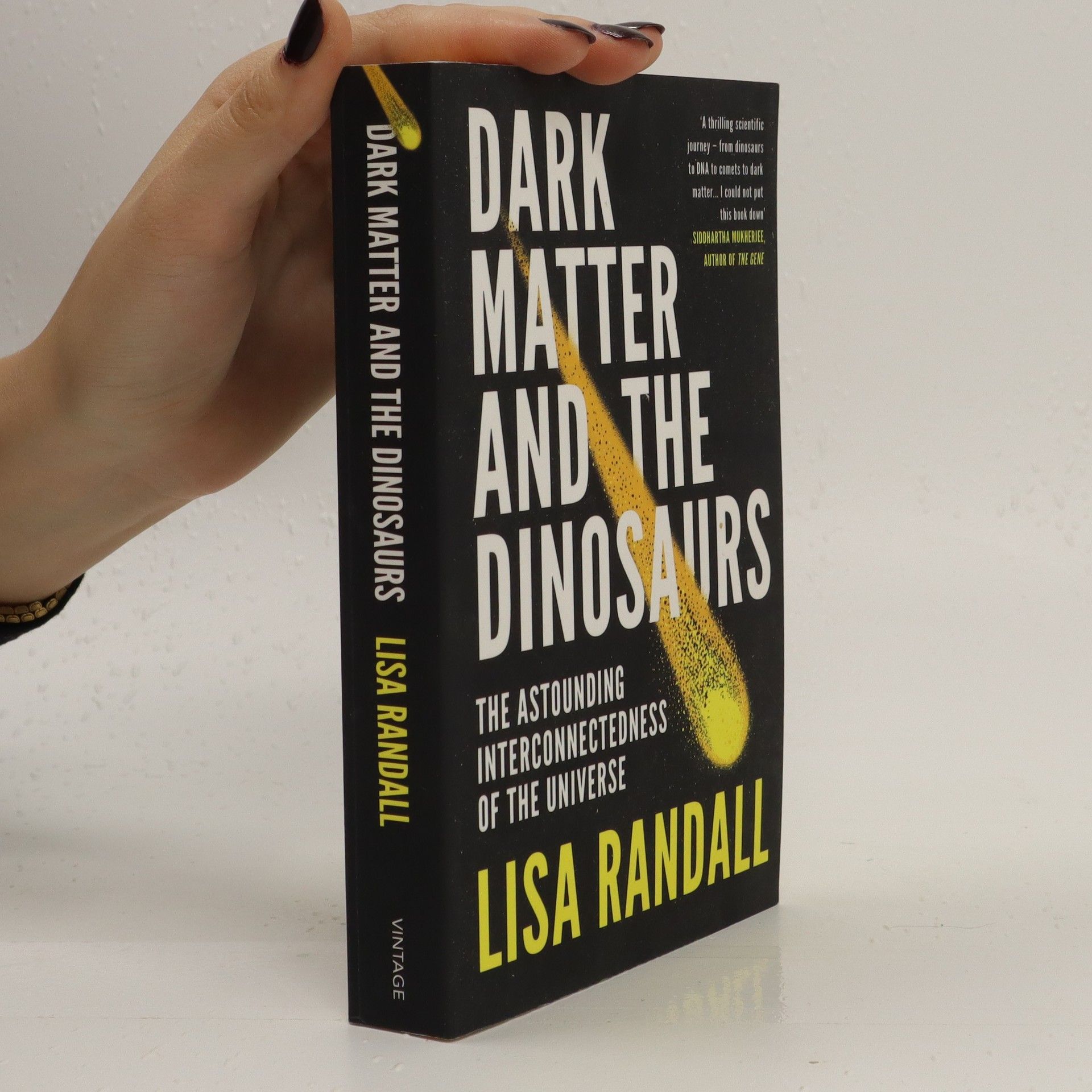Knocking on heaven's door
- 464pages
- 17 heures de lecture
This text makes clear the biggest scientific questions we face and reveals how answering them could ultimately tell us who we are and where we came from.
Lisa Randall est une physicienne théoricienne de premier plan dont le travail explore les questions fondamentales qui sous-tendent le modèle standard de la physique des particules. Ses recherches révolutionnaires portent sur les géométries « tordues » dans des dimensions spatiales supplémentaires, offrant des explications novatrices au problème de la hiérarchie et à la faiblesse de la gravité. Hautement citée et reconnue au sein de la communauté scientifique, ses recherches englobent la supersymétrie, la théorie des cordes et la cosmologie. Randall est connue pour sa capacité à élucider des concepts scientifiques complexes pour un public plus large, s'établissant ainsi comme une voix influente dans le domaine de la physique théorique.






This text makes clear the biggest scientific questions we face and reveals how answering them could ultimately tell us who we are and where we came from.
66 million years ago, a ten-mile-wide object from outer space hurtled into the Earth at incredible speed. The impact annihilated the dinosaurs, along with three-quarters of the other species on the planet. But what if this catastrophe was the sign of something greater- an opening vista onto the interconnectedness of the universe itself? This is the story of the astounding forces that underpin our existence; a horizon-expanding tour of the cosmos that unifies what we know about the universe with new thinking. From the far-flung reaches of space, the makeup of the universe and our solar system's place within it, to the mysterious and elusive stuff of dark matter and how it affects life here on Earth.
Vesmír stále skrývá mnohá tajemství. Kromě tří známých prostorových rozměrů možná zahrnuje i další dimenze. Zatím nevíme, zdali tyto dimenze mají rozměry zlomku milimetru či jsou naopak nekonečné, jestli vůbec existují nebo zda neexistuje vedle našeho vesmíru jiný, prozatím neviditelný a nedosažitelný. Autorka nás velmi přístupnou formou, s mnoha originálními a vtipnými analogiemi, provází fyzikou až na samu hranici současného poznání. Seznamuje čtenáře i s těmi nejobtížnějšími problémy, které tak trápí badatele v oboru teorie relativity, kvantové teorie a gravitace, a naznačuje možná řešení klíčových otázek fyziky – řešení pomocí skrytých dimenzí, zcela originální a navíc v budoucnu ověřitelná.
Jetzt mit einem aktuellen Anhang zur Higgs-Entdeckung! In keiner anderen Naturwissenschaft kündigen sich so umwälzende und aufregende Erkenntnisse für Mensch und Kosmos an wie in der Physik. Das große Ziel ist es, so kleine Dinge wie Atome und so große wie Galaxien einheitlich zu erklären. Doch wie soll das gelingen? In ihrem neuen Buch berichtet Besteller-Autorin Lisa Randall spannend und anschaulich aus den Laboren und Denkfabriken ihrer Kollegen: Welchen Fragen gehen Physiker nach? Welche Rolle spielen so gigantische Apparate wie der Teilchenbeschleuniger im CERN? Was hat es mit der Suche nach dem Higgs-Boson auf sich? Wie hängt angewandte mit theoretischer Physik zusammen? Lisa Randall zeichnet das Bild der gegenwärtigen Physik in all ihren Facetten und lässt ganz konkret werden, wie die moderne Grundlagenforschung funktioniert. Ein unterhaltsamer, lehrreicher Einblick in die faszinierende Welt der Physik und gleichzeitig ein Lob der kreativen Fähigkeiten des menschlichen Geistes und der Wissenschaft.
Eine Harvard-Physikerin sorgt mit ihrem Buch über verborgene Dimensionen des Universums für Furore. Die beobachtbare Welt, so ihre Hypothese, ist nur eine von vielen Inseln inmitten eines höherdimensionalen Raums. Nur ein paar Zentimeter weiter könnte es ein anderes Universum geben, das für uns unerreichbar bleibt, da wir in unseren drei Dimensionen gefangen sind. Sie führt Relativität, Quantenmechanik, Gravitation und eine weiterentwickelte Stringtheorie zusammen, zeichnet ein das Denken revolutionierendes Bild sich durchdringender, überlagernder und verwerfender 'Multiversen' – und zeigt, wie man diese bizarr anmutenden Dinge experimentell beweisen könnte. Lisa Randall gehört zu einer neuen Generation von Wissenschaftlern, die mit ihren spannenden und höchst lesbaren Arbeiten drastisch unsere Vorstellungen von der Welt verändern werden. Eine spannende Reise durch die Grenzregionen der heutigen Teilchenphysik und eine Begegnung mit einer erstklassigen Denkerin. „Lisa Randall zählt zu den führenden Theoretikern der Kosmologie.“ Sir Martin Rees, Präsident der Royal Society